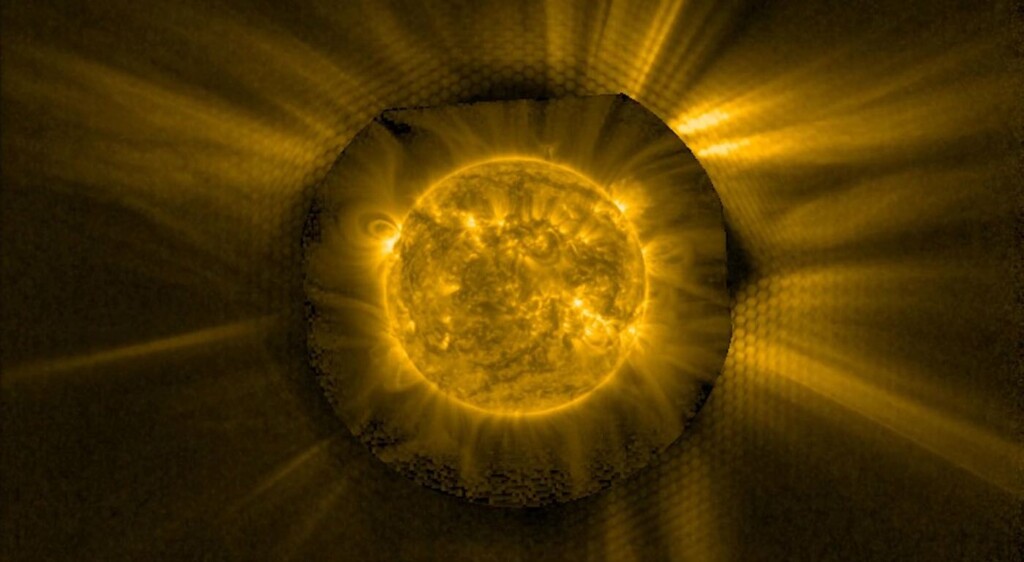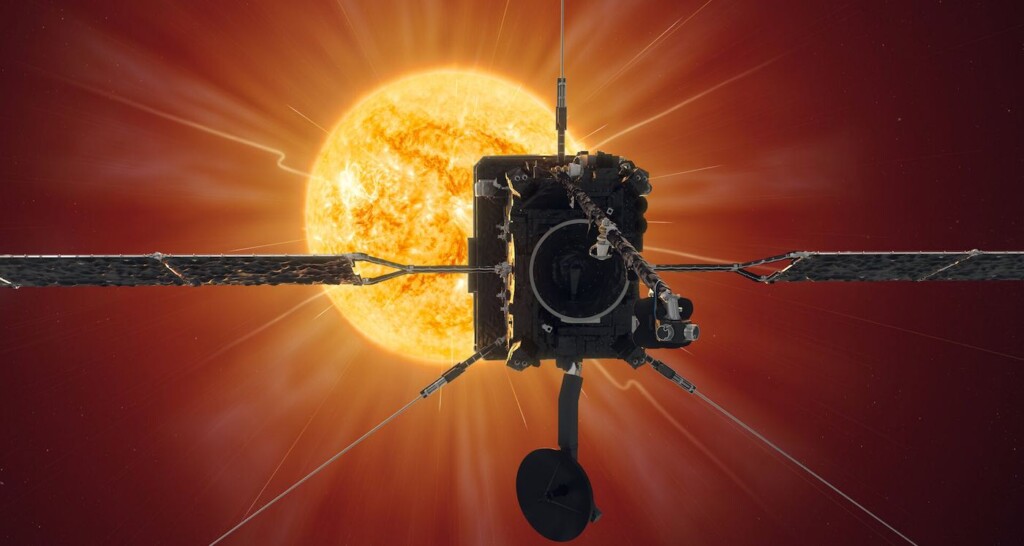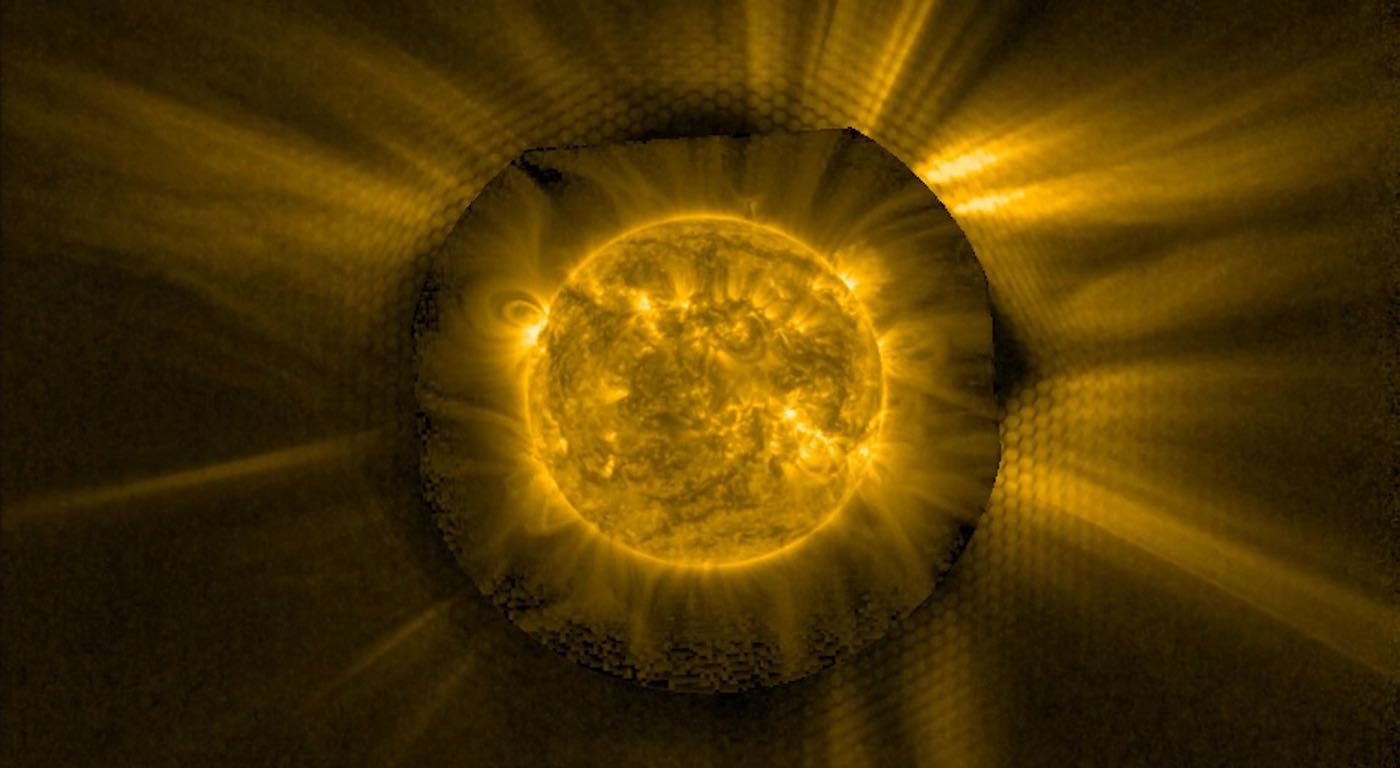
Scientists used a camera aboard a solar orbiter in a new mode which has revealed never-before-seen views of our sun.
The Extreme Ultraviolet Imager (EUI) on the European Space Agency probe has allowed them to record part of the Sun’s atmosphere at extreme ultraviolet wavelengths that has been almost impossible to image until now.
The mode of operation was made possible with a last-minute ‘hack’ to the camera and is likely to influence new solar instruments for future missions.
ESA explained that the EUI captures high-resolution images of the structures within the Sun’s atmosphere—a region known as the corona.
“During EUI’s construction, a last-minute modification to the safety door on the front of the instrument has allowed it to see deeper into its target region than originally specified.”
“It was really a hack,” says Frédéric Auchère, Institut d’Astrophysique Spatiale, Université Paris-Sud, a member of the EUI team. “I had the idea to just do it and see if it would work.”
ESA says it involved adding a small, protruding ‘thumb’, weighing a few grams, to the door of the instrument.
ANOTHER HOT LOOK: ‘Unprecedented’ New Photos of the Sun’s Surface Are Being Hailed as Landmark Achievement for Science
“As the door slides out of the way to let the light into the camera, if it is stopped halfway, the thumb covers the Sun’s bright disc, and EUI can detect the million-times fainter ultraviolet light coming from the surrounding corona.”

The team refers to this as the occulter mode of operation. Tests with the EUI occulter have been on-going since 2021. Now the team are confident in its successful operation and their results were published in Astronomy & Astrophysics.
Their video (shown below) shows an ultraviolet image of the Sun’s corona taken using the EUI occulter. An ultraviolet image of the Sun’s disc has been superimposed in the middle, in the area left blank by the occulter.
SUPER POPULAR: After 17 Years, A Spacecraft Makes its First Visit Home Having Made History
The image of the Sun’s disc has been taken by NASA’s STEREO mission, which happened to be looking at the Sun from almost the same direction as Solar Orbiter at the same time, so the features on the surface have a good correlation to the features in the corona. NASA collaborates on the Solar Orbiter mission with ESA, which operates the probe.
In the past, images of the Sun’s corona have been taken with dedicated instruments called coronagraphs. For example, Solar Orbiter’s coronagraph is called Metis. The value of this new approach is that the coronagraph and the camera can be included in the same instrument.
“We’ve shown that this works so well that you can now consider a new type of instrument that can do both imaging of the Sun and the corona around it,” says Daniel Müller, the ESA Project Scientist for Solar Orbiter.
LOOK: New Solar System Found Where Planets Orbit Two Suns—Just like Luke Skywalker’s Home in Star Wars
Even before those new instruments, there is a lot of new science to come from EUI. The occulter mode makes it possible for scientists to see deeper into the Sun’s atmosphere. This is the region that lies beyond the field of view of classical EUV imagers but it is usually obscured by traditional coronagraphs. Now, however, EUI’s occulter can image this little-explored region easily.
“Physics is changing there, the magnetic structures are changing there, and we never really had a good look at it before. There must be some secrets in there that we can now find,” says David Berghmans, Royal Observatory of Belgium, and the EUI Principal Investigator.
Described as the most complex scientific laboratory ever to have been sent to the Sun, the Orbiter is designed to take images closer than any spacecraft and for the first time look at its uncharted polar regions.
ANOTHER GREAT PIC: Astronomers Observe 2 Neutron Stars Colliding and the Extreme Reaction ‘Defies All Expectations’
By combining observations from Solar Orbiter’s six remote-sensing instruments and four sets of in situ instruments, scientists hope to unravel the mysteries of our solar system’s star.
SHINE the Coolest View of Our Sun on Social Media for Astronomy Fans Worldwide…




















